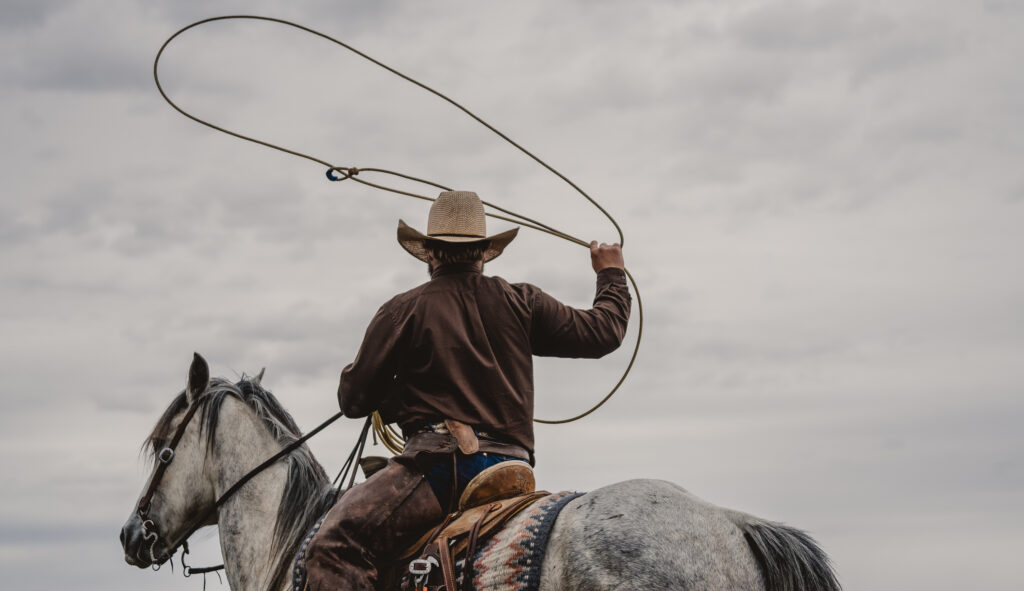The image of the cowboy wandering the rugged terrain of the Old West often conjures notions of resilience, grit, and a vast array of survival skills. These men and women mastered techniques that ensured their safety and well-being despite the harsh and unpredictable environment. Among the crucial skills, knowing how to tie a lasso and efficiently use it was fundamental for handling livestock and ensuring survival.
Another indispensable survival skill was the ability to prepare a reliable bed. Cowboys needed bedding thick enough to provide shelter and comfort, yet not too cumbersome to carry, ensuring they could rest well even in the wild. Equally essential was their habit of carrying a rain slicker, which protected them from sudden storms that could lead to dangerous situations such as hypothermia.
For a more comprehensive understanding of the items that cowboys deemed necessary, take a look at these 16 things cowboys carried to survive in the Wild West. These skills and tools not only highlight their ingenuity but also provide timeless lessons in self-reliance and resourcefulness.

Mastering the Elements
Cowboys roaming the Old West needed essential skills for survival. Understanding how to build a fire, source water, and erect a shelter was crucial for thriving in the wilderness.
Building a Fire
Creating a reliable fire was a fundamental skill for any cowboy. They often used flint and steel alongside dry tinder to get a spark. Cowboys knew to gather different sizes of wood, starting with small kindling and gradually adding larger pieces. Mastering the placement of materials was key to ensuring the fire caught and stayed lit. In wet conditions, they sought out dry wood underneath layers of bark or from the inside of fallen, rotting logs.
Finding Water
Water was one of the most precious resources for survival. Cowboys often relied on natural indicators like the presence of lush vegetation or animal tracks leading to water sources. They also used rudimentary wells or dug holes near dried creek beds to find underground water. Knowing where and how to filter and purify water, often using makeshift cloth filters or boiling, helped prevent illness.
Constructing Shelter
Shelter construction could make the difference between a restful night and a dangerous ordeal. Cowboys frequently used natural land formations like caves or overhangs. They also built simple lean-tos with branches and leaves, ensuring the opening faced away from the wind. In colder climates, insulation was vital; they used grasses, animal hides, or even layers of dirt to keep warm.
Navigating the Land
Cowboys in the Old West were adept at navigating the challenging landscapes of the American frontier. Their skills included reading the stars for direction, understanding weather patterns to anticipate changes, and tracking to find paths.
Reading the Stars
Cowboys used the night sky as a reliable guide for navigation. The North Star, also known as Polaris, was crucial for determining north. By locating the Big Dipper constellation, they could find Polaris, which aided them in maintaining a consistent direction during night travels.
In addition to the North Star, they used the positions of other prominent constellations like Orion and Cassiopeia. These constellations helped them gauge the time and their location relative to their intended destination.
Understanding Weather Patterns
Recognizing weather patterns was vital for cowboys to ensure safety and manage their routes. They learned to predict weather changes by observing clouds, winds, and animal behavior. For instance, high, wispy cirrus clouds often indicated a change in weather within the next 24 hours.
Cowboys also paid attention to wind direction and smells. Warm, humid breezes suggested nearby bodies of water, while a sudden drop in temperature could precede a storm. Knowledge of these signs allowed them to make informed decisions about seeking shelter or continuing on their journey.
Tracking & Pathfinding
Tracking was another essential skill. Cowboys read the terrain and animal tracks to find water sources, grazing areas, and navigate through unfamiliar land. They looked for signs like broken twigs, disturbed foliage, and the direction of animal footprints to choose the best path forward.
They also used landmarks such as distinctive rock formations, rivers, and tree lines to orient themselves. This knowledge helped them avoid dangerous areas and find shorter, safer routes.
Cowboys’ deep understanding of these navigation techniques was crucial for their survival and success in the Old West. Their ability to read natural signs ensured they could travel safely and efficiently through the vast and often unforgiving landscape.
